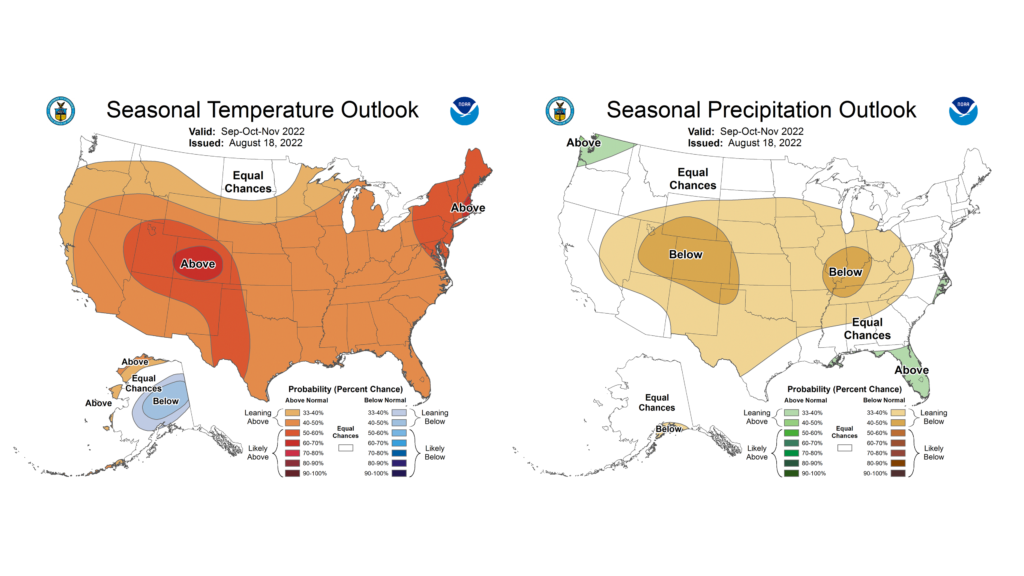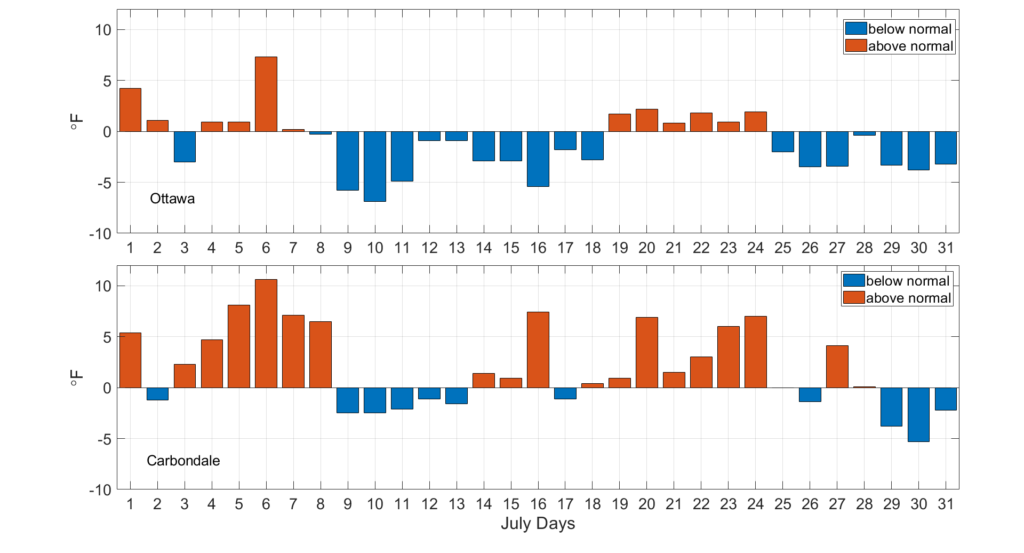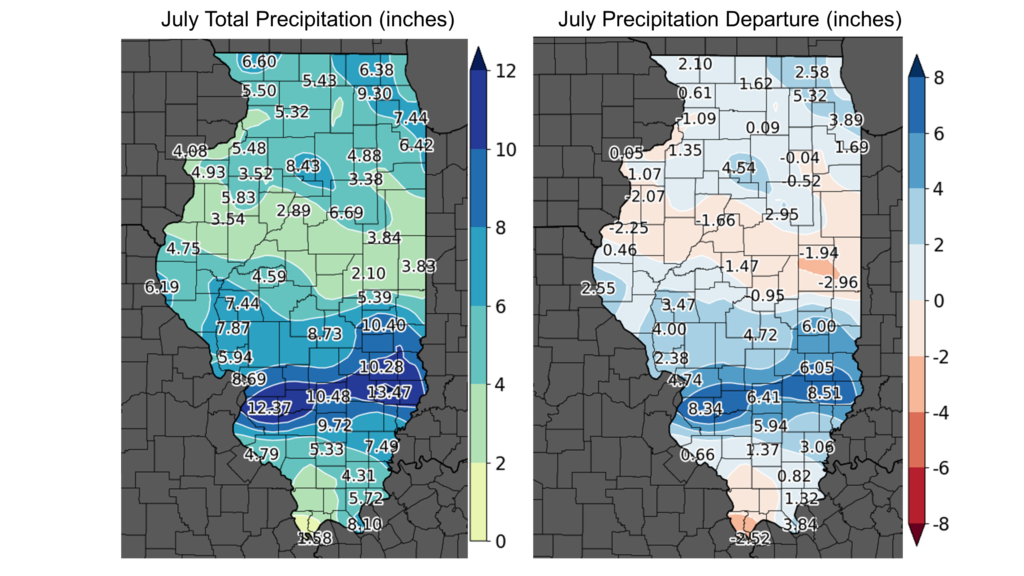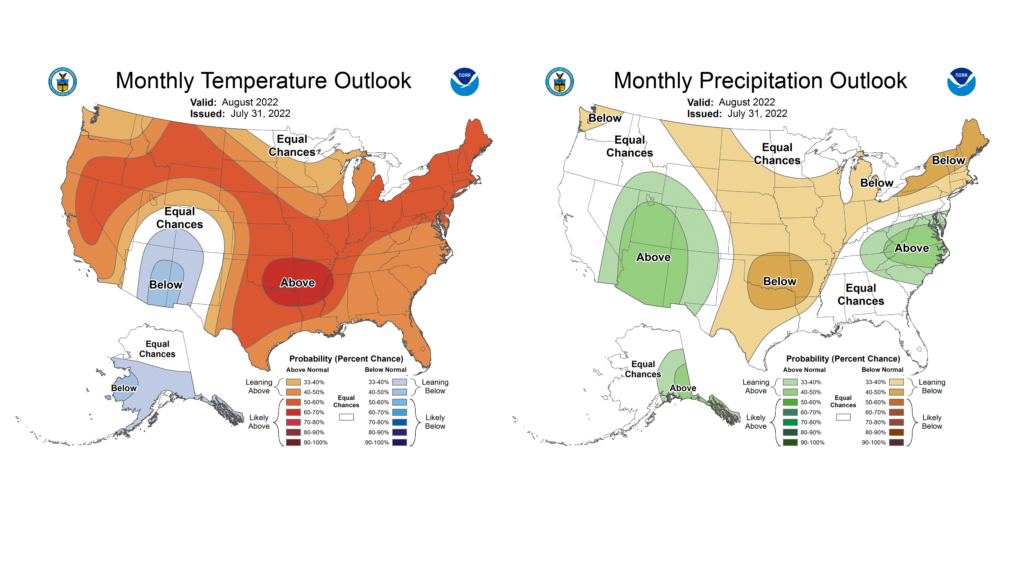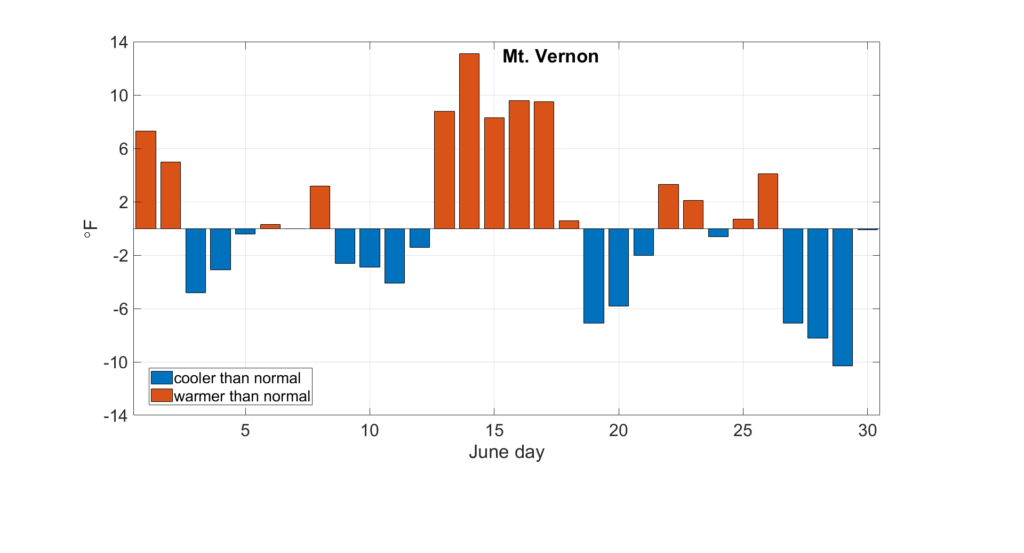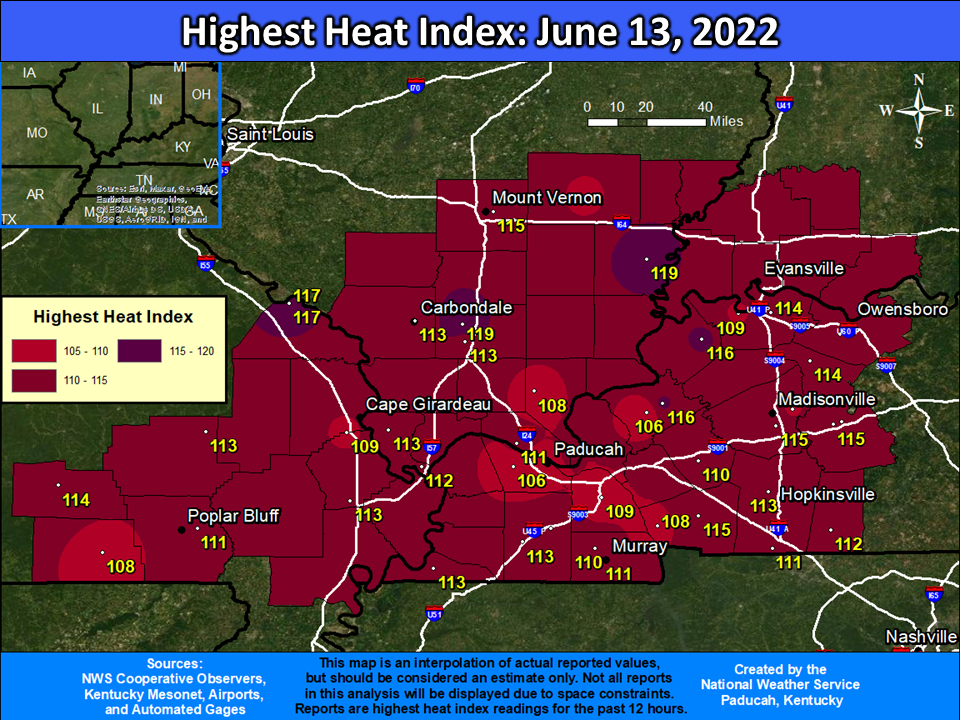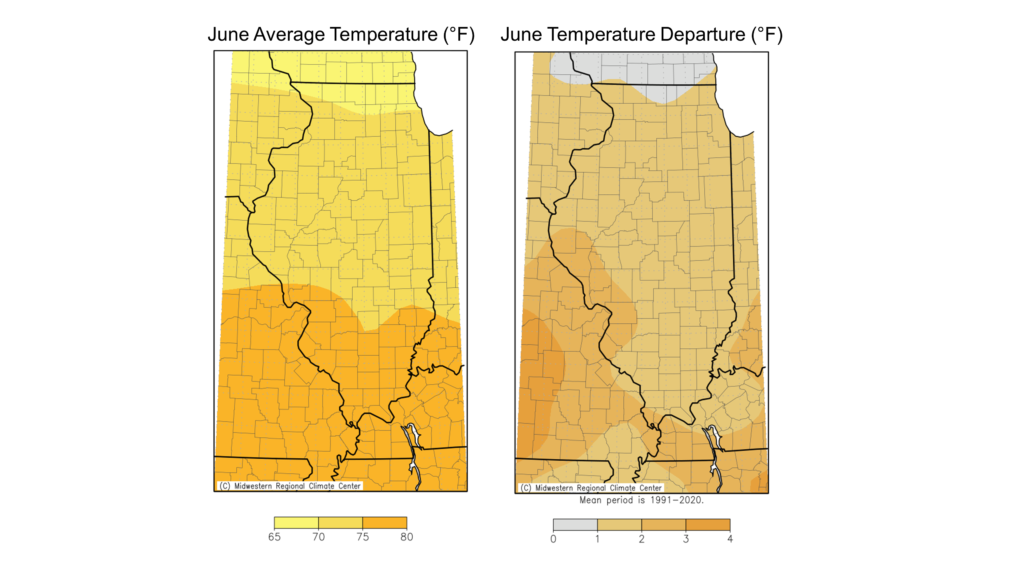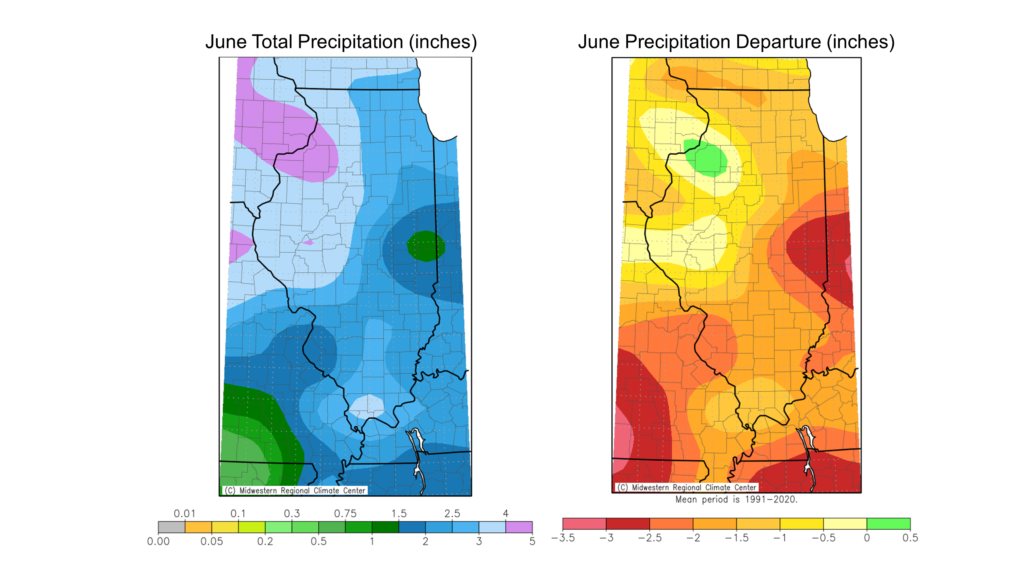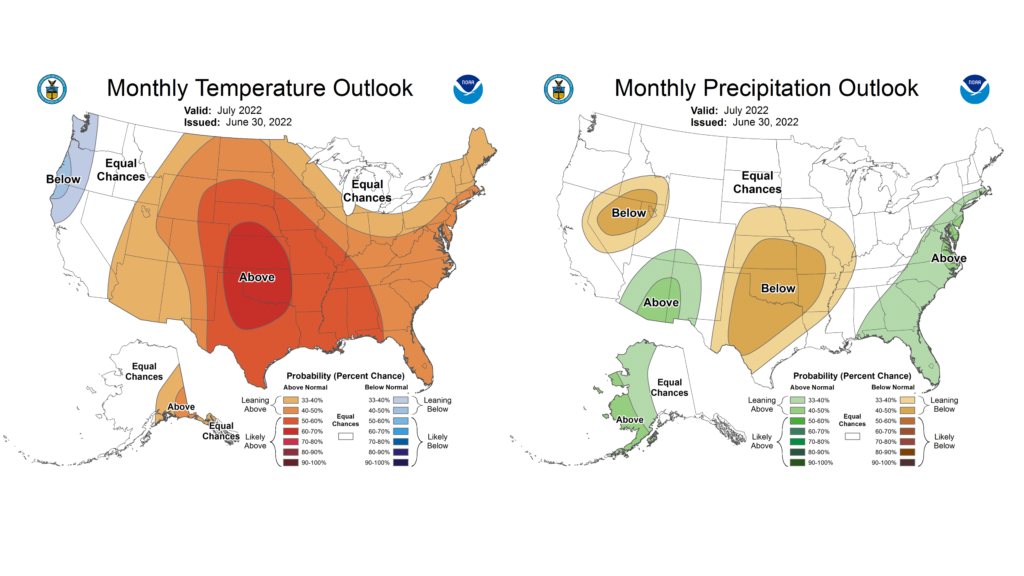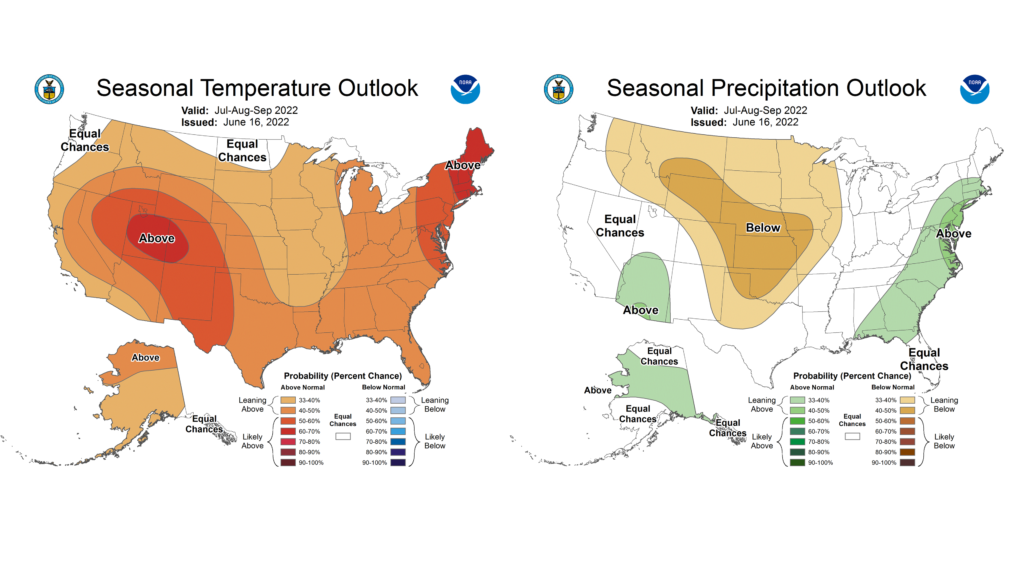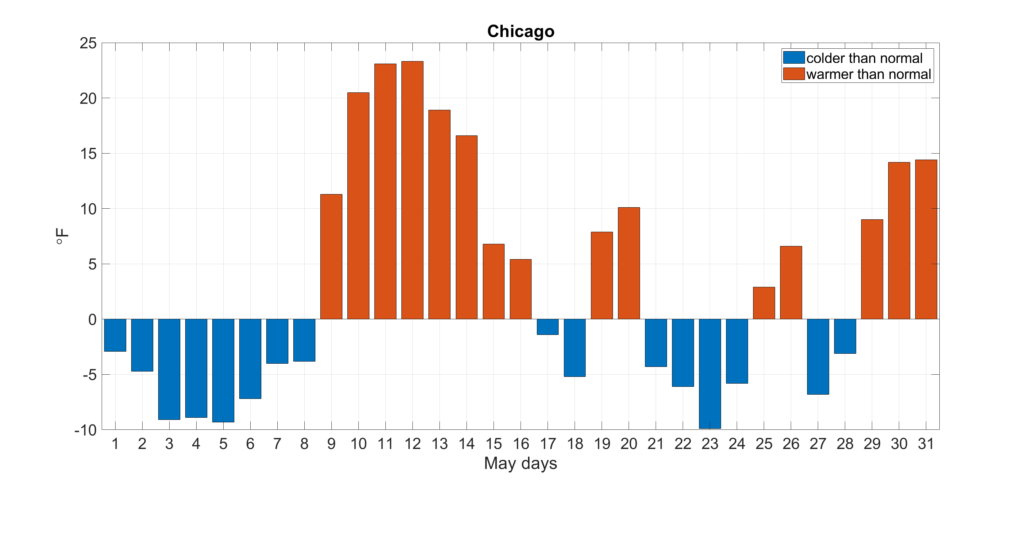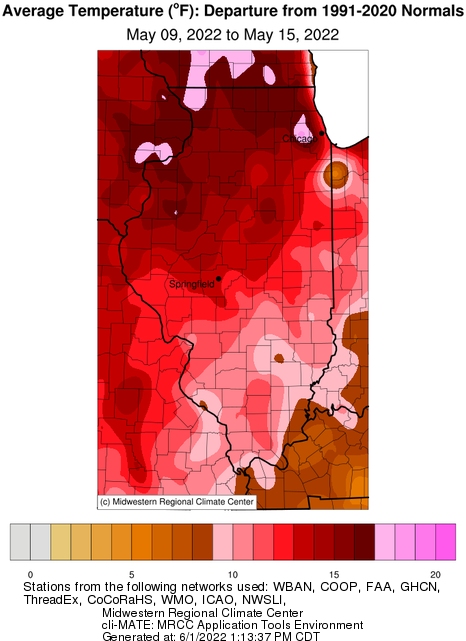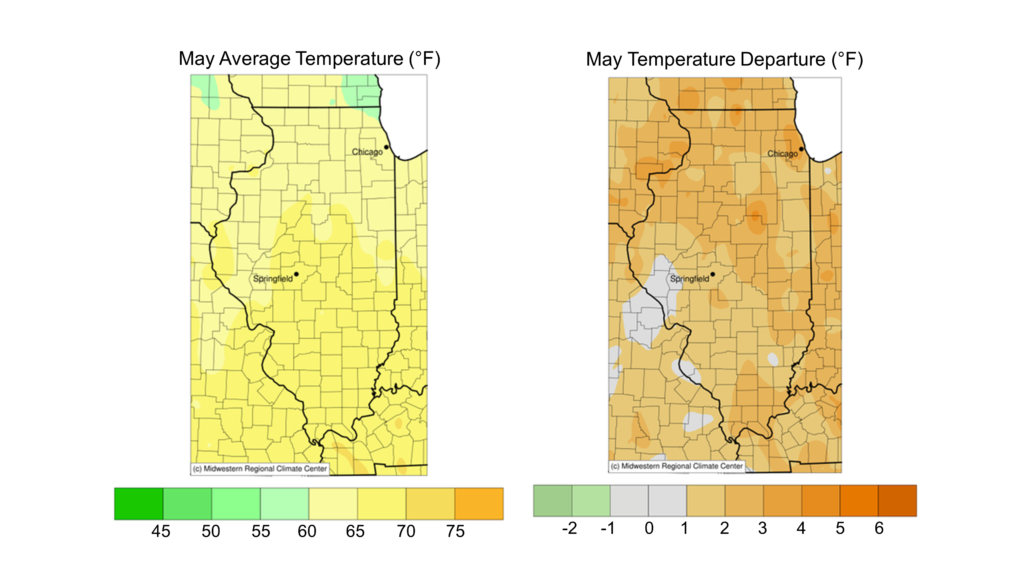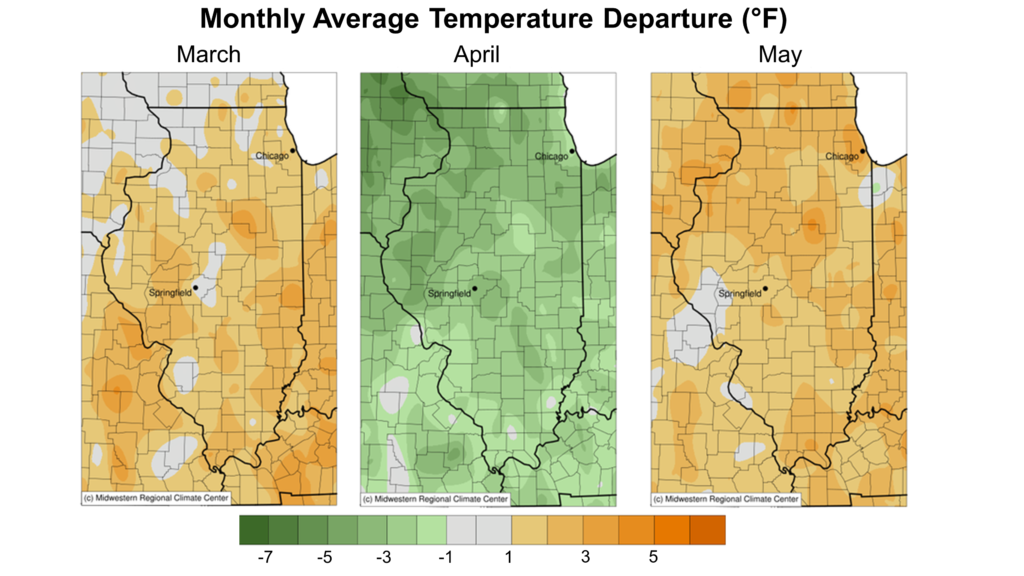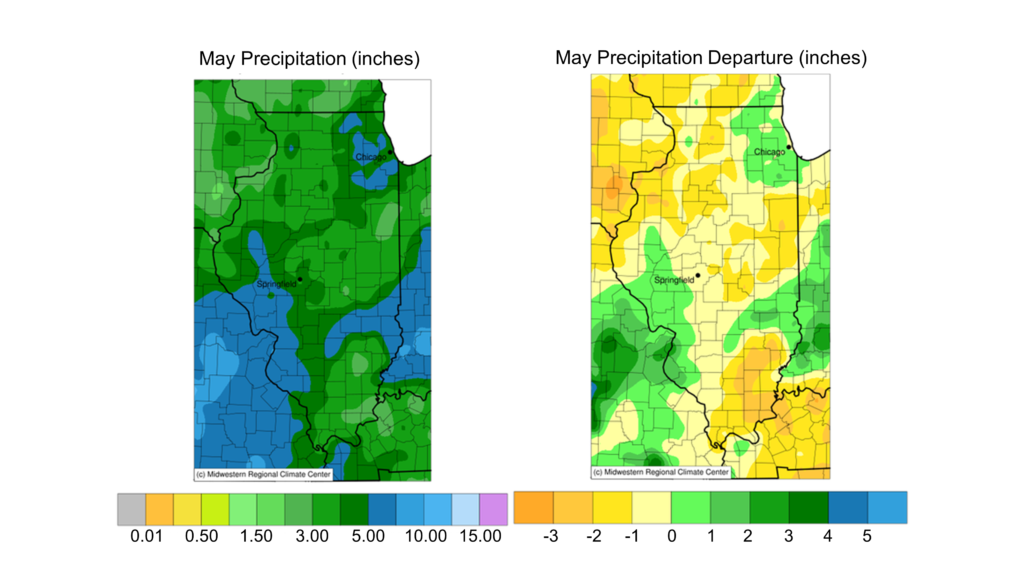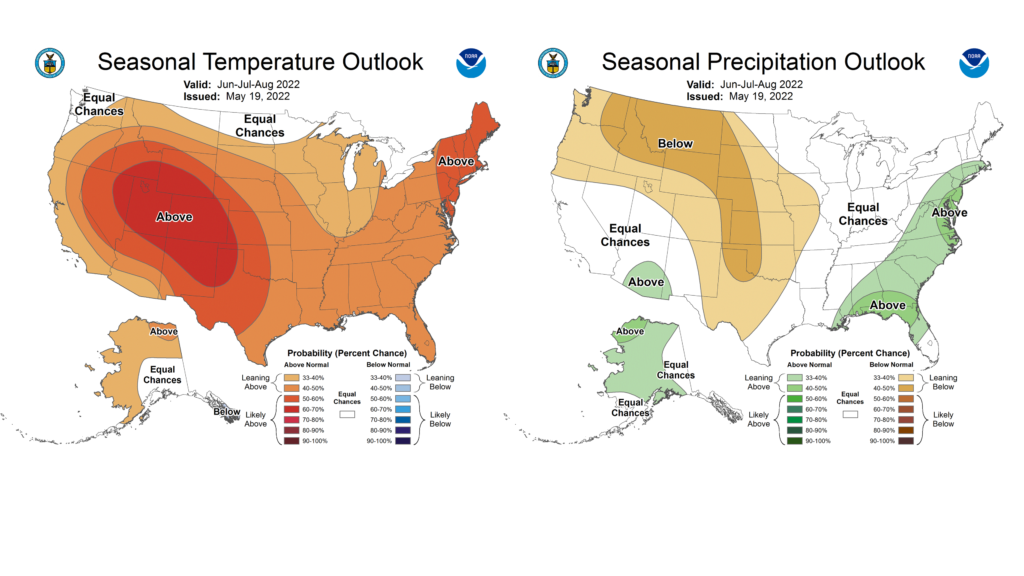The preliminary statewide average August temperature was 73.8 degrees, 0.2 degrees above the 1991–2020 average and the 58th warmest on record going back to 1895. The preliminary statewide average total August precipitation was 4.10 inches, 0.45 inches above the 1991–2020 average and the 41st wettest on record statewide.
Data are provisional and may change slightly over time.
A Very Mild (And Well Deserved) August
May kicked off summer early in Illinois with a very unusual heat wave. Then came a very warm June that had this winter lover wishing for sweater weather. Fortunately, a slightly cooler July was followed by a very mild August. As the temperature departures from Bloomington-Normal in Figure 1 show, the only prolonged warm period last month was in the first week, when temperatures were 5 to 10 degrees above normal. Only 5 of the past 21 days in August were warmer than normal, giving Illinoisans the nice end to summer we deserved.
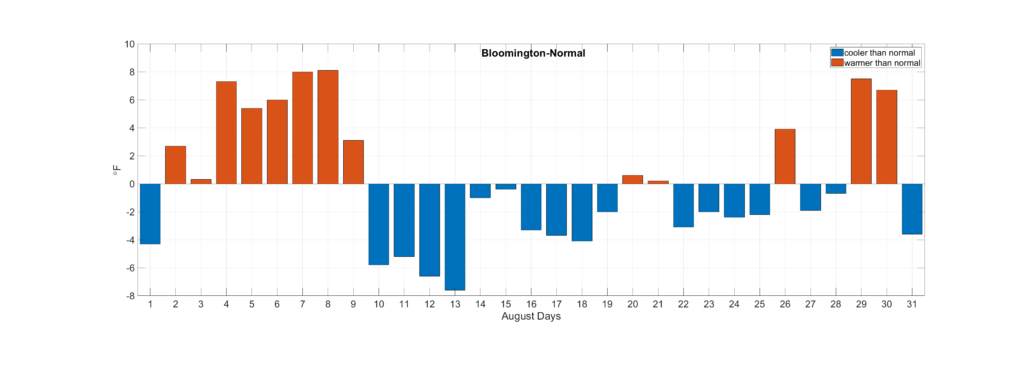
During the hot week at the beginning of the month, high temperatures regularly reached into the 90s across the state, including 96 degrees in Cahokia Heights and 95 degrees at Chicago Midway. However, the cold front that moved through the state around August 9 brought much cooler, drier air into the region. Nighttime low temperatures in the second and third weeks of the month dipped into the 50s across the state, including 50 degrees in Woodford and Pike counties.
August average temperatures ranged from the low 70s in northern Illinois to the high 70s in southern Illinois, within 1 degree of normal statewide (Figure 2). The warmest place in the state last month was Bean Ridge in Alexander County with an average August temperature of 78.1 degrees. The coolest place in the state–other than my house–was Shabbona in DeKalb County with an average August temperature of 69.1 degrees.
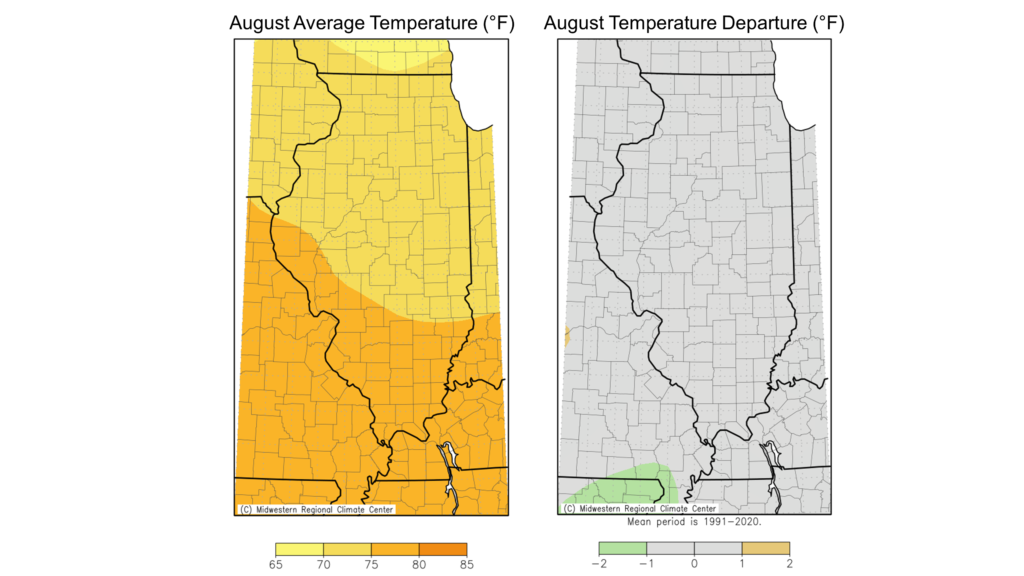
Daily high maximum temperature records were broken last month at 2 stations, and daily high minimum temperature records were broken at 16 stations. Among the nighttime temperature records was a 78-degree low temperature in Peoria on August 7, which beat the previous daily record set in 1968 by 3 degrees. Daily low maximum temperature records were broken last month at 3 stations, but no daily low minimum temperature records were broken.
Overall, the preliminary statewide average August temperature was 73.8 degrees, 0.2 degrees above the 1991–2020 average and the 58th warmest on record going back to 1895.
Slightly Warmer Summer
June was 1 to 3 degrees warmer than normal, followed by a July and August with near normal temperatures (Figure 3). The result was a preliminary statewide climatological summer average temperature of 74.4 degrees, only 0.6 degrees above normal. If that number is made official by the National Centers for Environmental Information (NCEI), this summer will be tied with 2006 as the 39th warmest on record statewide and 0.2 degrees cooler than in 2020 and 0.3 degrees cooler than in 2021.
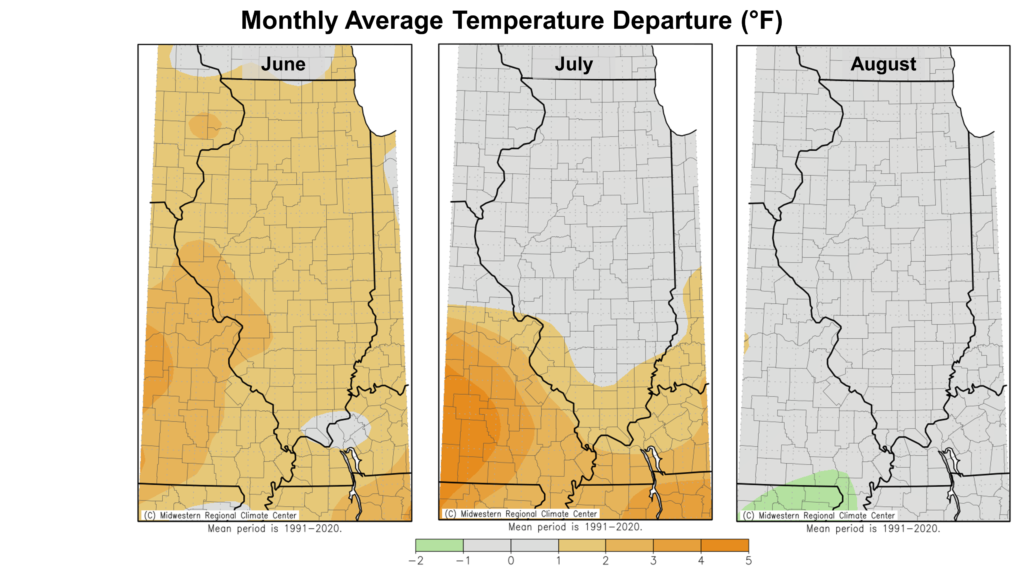
Mixed Bag of August Rainfall
As is typical for late summer, your August rainfall summary greatly depends on where you are in the state. On one end of the spectrum, heavy rainfall early in the month brought 2–3 times the normal August rainfall to the Effingham-Olney and Freeport areas. In the latter event, between 5 and 11 inches of rain fell in eastern Jo Daviess and Stephenson Counties in less than 48 hours, inundating roads, flooding homes, and causing flooding along the Pecatonica River. The Quad Cities National Weather Service office has a detailed summary of the event and the damage it caused: https://www.weather.gov/dvn/summary_080822.
Just days earlier, a swath of east-southeast Illinois between Effingham and Olney saw 7 to 10 inches of rain in just 24 hours. This intense rainfall followed the second wettest July on record in Olney, so soils were already at or near saturation. Many fields from Effingham to Wayne County were flooded by both runoff and flooding from the Little Wabash and Embarras Rivers. Meanwhile, a large part of western Illinois was very dry in August, with some parts of Cass, Schulyer, Brown, Adams, and Hancock Counties picking up only 0.5 inches of total rainfall for the month, less than 20 percent of normal.
The results of these precipitation extremes are shown in the maps of August precipitation in Figure 4. Total precipitation last month ranged from nearly 15 inches in parts of northwest and southeast Illinois to less than 1 inch in western Illinois. The wettest point in the state in August was Freeport, with 14.55 inches. In contrast, the driest point in the state last month was the Quincy Dam in Adams County, with only 0.41 inches of total rain. Overall, the preliminary statewide average total August precipitation was 4.10 inches, 0.45 inches above the 1991–2020 average and the 41st wettest on record statewide.
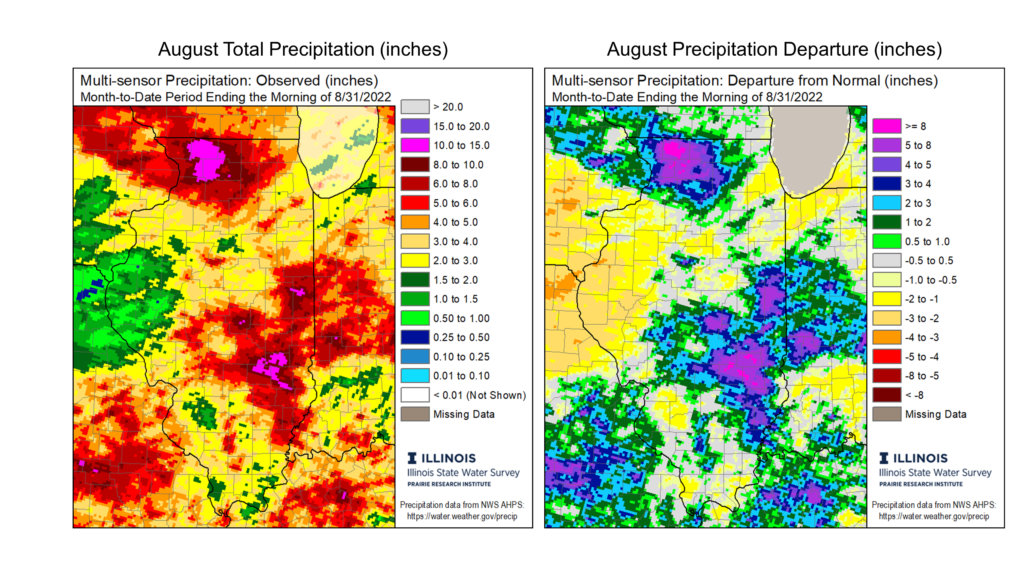
Conservation of Drought
August abided by the law of conservation of drought, the law that tells us that drought is not created or destroyed, just moved around. Multiple rounds of rainfall in late August brought much-needed drought relief to east-central Illinois, where June and July rainfall deficits had exceeded 7 inches. The latest U.S. Drought Monitor reflects this improvement, with moderate drought occurring in just the Interstate 74 corridor from Champaign to McLean counties. However, the drought removed in eastern Illinois migrated to western Illinois following an exceptionally dry month in some places. Moderate drought spans from Henderson to Adams counties in western Illinois, reflecting this recent dryness (Figure 5).

Summer Rainfall
June was drier than normal virtually everywhere in the state and exceptionally dry in east-central Illinois. Heavy rain in southern Illinois and northeast Illinois in July kept those areas wet, while most of central Illinois remained on the dry side. August alleviated dry conditions in eastern Illinois and brought exceptionally wet conditions to northwest Illinois and exceptionally dry conditions to western Illinois (Figure 6). So, that left most of northern and southern Illinois with a total summer rainfall that was near normal to 2–4 inches wetter than normal. Meanwhile, a large part of central Illinois, from Quincy to Danville, was 1 to 5 inches drier than normal this summer.

Overall, the preliminary statewide total average summer precipitation was 12.23 inches, 0.68 inches above normal. If this number is made official, this summer will be the 45th wettest on record, 1.10 inches wetter than in summer 2020 and 1.7 inches drier than in summer 2021.
Looking Forward to September and Fall
September is the start to climatological fall and when we really begin to see a temperature drop-off in the state. However, the most recent September outlooks from the Climate Prediction Center lean toward warmer than normal conditions for the month in Illinois. September precipitation outlooks are less confident, with equal chances of above and below normal precipitation (Figure 7).
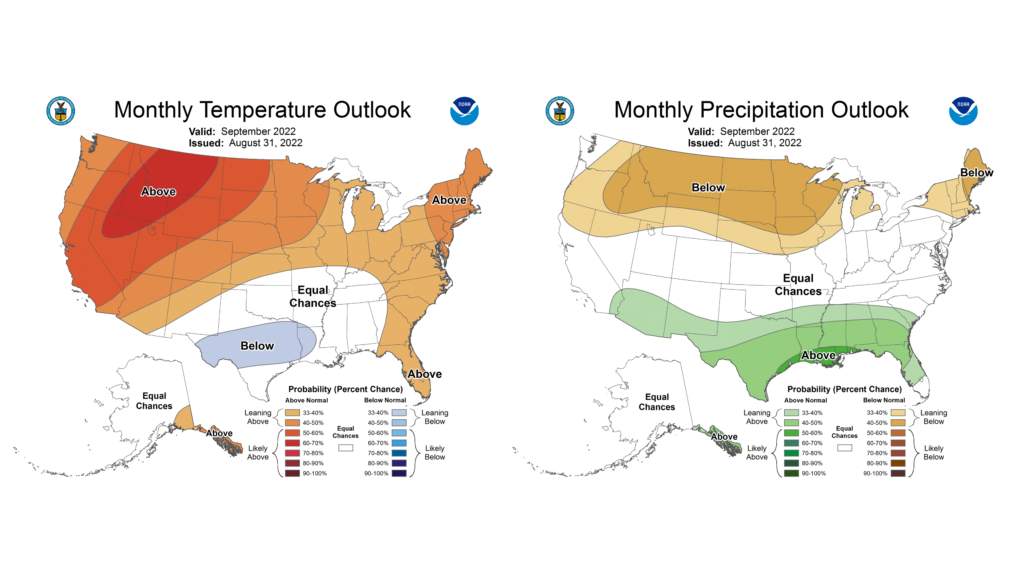
Meanwhile, outlooks for the entire climatological fall, September to November, continue to lean toward warmer than normal conditions across most of the contiguous U.S. La Niña conditions are favored to return this season, and Climate Prediction Center outlooks for fall lean to the drier than normal tendency we have during La Niña fall seasons (Figure 8).
